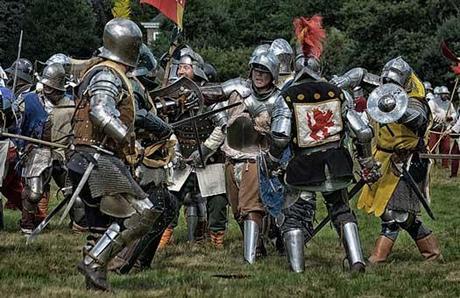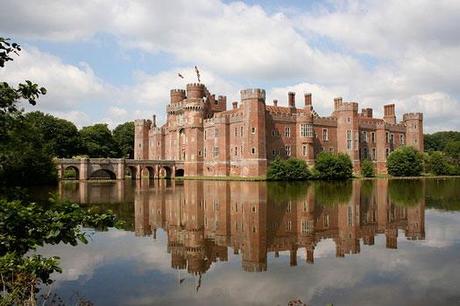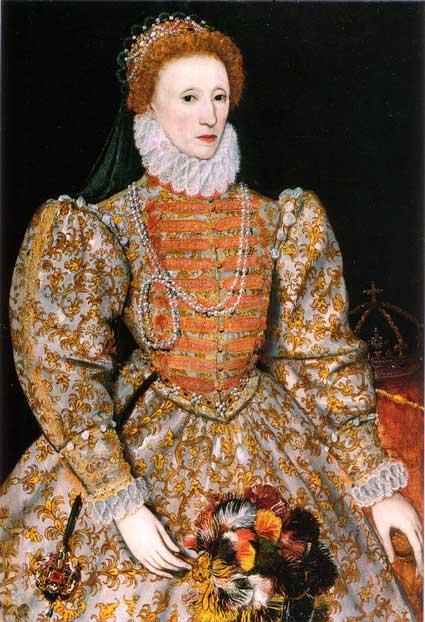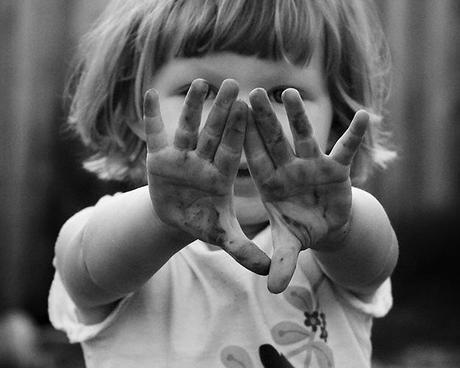As modernists, we like to think of ourselves as civilized, efficient, and forward thinking. Looking at the way that people used to use the bathroom in times of past will reinforce this notion. To think that we were so apalled when we found out that toilet seat liners don’t work. These fun facts will make a port-a-potty first class.
This will address some of the claims that the modern bathroom is inefficient. Although it’s not perfect, let’s take a look at how far along the bathroom has come. Warning, you don’t want to read this before you eat or even use the bathroom.

This is not what it was like in Medieval Times. (CC)
11 Strange Facts About Medieval Bathrooms
1. Chamber Pots
Chamber pots were used by women to collect waste overnight. When they were finished, the contents would be thrown over balcony/out the window with the accompanying words of “garde loo” which is French for “watch out for the water.” Muck-rackers were hired to help keep the streets walk-able. Throwing excrement’s into the street was a Roman practice, which leads us to our next point.
2. Nosebags – Smell the Roses
Nosebags were small bags that were filled with flowers and other fragrances that would be used to be able to stomach the smell of streets filled with waste. Men and women would put their noses to their nosebags whenever things got particularly smelly. The lesson here, be thankful for Febreeze and use it.
3. There Was No Such Thing As Toilet Paper
Before good old Charmin ever existed, everyone was sitting on the loo without an extra roll in sight. So what did they use? Back then in way back time, people would use leaves, moss, a rag or hay. How civilized. If you were affluent, you had the luxury of wiping your bottom with lamb’s wool.
4. Public Bathing – Same Water
You read that headline right; people used to bath in public using the same water. Public bathing was popular in the 13th century. Firewood was need to heat the bath to a comfortable temperature but it was so hard to find that people often bathed using the same water. Aren’t you glad you were born in the 21st century?
5. Urine Was Used to Do the Laundry
So for some reason, the Romans believed that urine would remove stains. It was until the Medieval Era that people would use a concoction of ashes and urine to get the stains out of their clothes. How this would work, we’ll never know.
“Bobby, bring your clothes down so I can throw them in the washer.” – “No thanks Mom!”
6. Castles Were Surrounded by Waste

Dare to take a plunge? Medieval moats were filled with feces that came from gardeloos that jutted out of castle walls. (CC)
The plumbing system of Medieval castles was designed so that waste products would flow straight into the moat that surrounded the castle. These “Garderobes” extended outside of the walls of the castle and had a opening at the bottom that would empty into the moat. The moat was used as a defense mechanism and boy was it smelly. Invaders would be in for a surprise when they tried to cross uninvited. Could you imagine the stench?
7. Washing and Bathing Was Very Uncommon
In medieval times, the wealthy would take a bath every other month. If you were poor, you’d be lucky to bath 4 times per year. There was no hot water so it had to be carried in through a well and then heated over a fireplace.

It is said that Queen Elizabeth I only bathed once a year. This shows how uncommon bathing was in Medieval Times. © NPC
Fun Fact: It is said that Queen Elizabeth I only bathed once a year.
8. Bench Toilets
Romans had public toilets that were made of stone benches with holes carved in the tops. There would be multiple people sitting next to each other, without any privacy. Interestingly, it was common for people to hold meaningful conversations and even settle business deals with the shake of the hand, all while sitting on the loo.
Fact: It wasn’t until the 1880’s that Thomas Crapper invented the modern toilet.
9. Urine Was Used as an Antiseptic
In the absence of modern medicine, urine was occasionally used as an antiseptic in during Medieval Times. In 1666, a physician named George Thomson recommended urine to be used to cure the plague.
10. People Didn’t Wash Their Hands Often
Wash basins were often located outside or a ways away from the dining area. Because of this, most people didn’t wash their hands when consuming food. It didn’t help that there weren’t any forks in Medieval times so everyone ate with their hands. Think about all the things you have to wash your hands after touching.

In Medieval Times, people usually didn’t wash their hands before eating because wash basins were located far away from the dining room (often outside).
[READ: 10 Things You Must Wash Your Hands After Touching]
11. Master of the Chamber
The king had a servant that was dedicated to servicing the king in the bathroom but don’t think that this was a lowly held position. The Master of the Chamber was highly regarded and was often one of the most trusted servants of the king. This didn’t come without the responsibility of helping the king wipe. “Your majesty, I believe we are out of Charmin.”
More Surprising Bathroom Facts:
- Surprise Surprise, Toilet Seat Liners Don’t Work
- Why Economists Are Excited That The Economy is Going Down the Toilet
- The 14 Greatest Bathroom Quotes of All Time
About the Author
Cheryl Khan is a designer and writer at Tradewinds Imports.com, an online specialty site dedicated to retailing fine bathroom furnishings. She has extensive knowledge about all the finer details that go into planning the perfect bath renovation project and is an expert on all things bathroom! Send her your bathroom Q’s on twitter @SuperInteriors!
